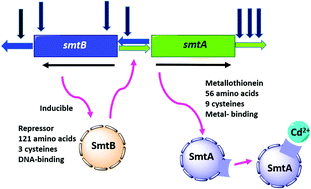Diversity, structure and regulation of microbial metallothionein: metal resistance and possible applications in sequestration of toxic metals
Abstract
Metallothioneins (MTs) are a group of cysteine-rich, universal, low molecular weight proteins distributed widely in almost all major taxonomic groups ranging from tiny microbes to highly organized vertebrates. The primary function of this protein is storage, transportation and binding of metals, which enable microorganisms to detoxify heavy metals. In the microbial world, these peptides were first identified in a cyanobacterium Synechococcus as the SmtA protein which exhibits high affinity towards rising level of zinc and cadmium to preserve metal homeostasis in a cell. In yeast, MTs aid in reserving copper and confer protection against copper toxicity by chelating excess copper ions in a cell. Two MTs, CUP1 and Crs5, originating from Saccharomyces cerevisiae predominantly bind to copper though are capable of binding with zinc and cadmium ions. MT superfamily 7 is found in ciliated protozoa which show high affinity towards copper and cadmium. Several tools and techniques, such as western blot, capillary electrophoresis, inductively coupled plasma, atomic emission spectroscopy and high performance liquid chromatography, have been extensively utilized for the detection and quantification of microbial MTs which are utilized for the efficient remediation and sequestration of heavy metals from a contaminated environment.



 Please wait while we load your content...
Please wait while we load your content...